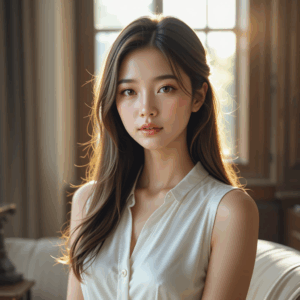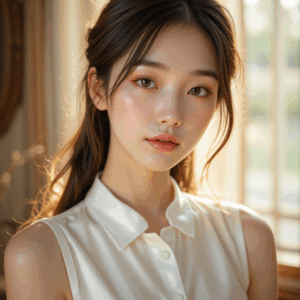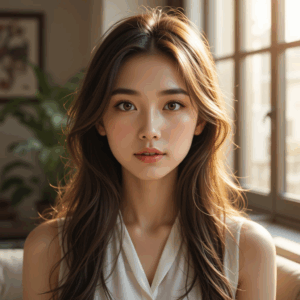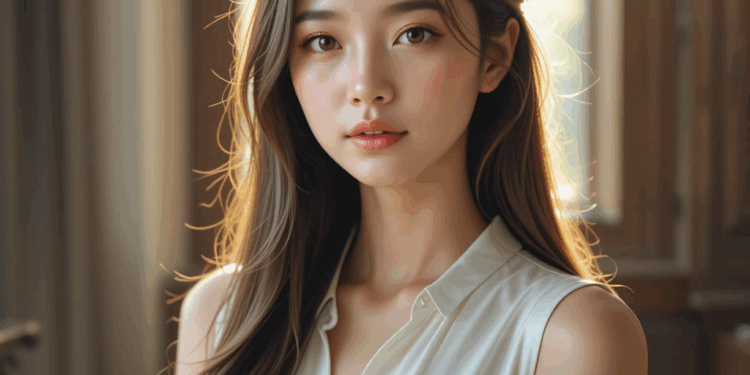Kicking off with Artificial Beauty: Exploring the World's Most Gorgeous AI Women, this opening paragraph is designed to captivate and engage the readers, providing an overview of the fascinating topic at hand. From defining the concept of Artificial Beauty to delving into the role of AI women in the beauty industry, this introduction sets the stage for a deep dive into the evolution, characteristics, and societal impact of AI-generated beauty.
 Artificial Beauty refers to the creation of aesthetically pleasing and visually appealing features through the use of artificial intelligence (AI) technology. This concept has gained significant attention in today's world as AI continues to advance and play a crucial role in various industries, including the beauty sector.AI women are generated by utilizing algorithms and deep learning techniques to design digital models that embody idealized standards of beauty.
These AI women serve as virtual representations of perfection and are often used in advertisements, fashion shows, and digital media campaigns to showcase beauty products and trends.
Artificial Beauty refers to the creation of aesthetically pleasing and visually appealing features through the use of artificial intelligence (AI) technology. This concept has gained significant attention in today's world as AI continues to advance and play a crucial role in various industries, including the beauty sector.AI women are generated by utilizing algorithms and deep learning techniques to design digital models that embody idealized standards of beauty.
These AI women serve as virtual representations of perfection and are often used in advertisements, fashion shows, and digital media campaigns to showcase beauty products and trends.
 The evolution of AI-generated women in art and media has been a fascinating journey that reflects changing perceptions of beauty and technology. From early depictions to modern portrayals, AI women have played a significant role in shaping our understanding of artificial beauty.
The evolution of AI-generated women in art and media has been a fascinating journey that reflects changing perceptions of beauty and technology. From early depictions to modern portrayals, AI women have played a significant role in shaping our understanding of artificial beauty.
 AI women considered beautiful often exhibit a combination of idealized features that are culturally perceived as attractive
. These characteristics are meticulously designed to captivate the viewer and evoke a sense of perfection.
AI women considered beautiful often exhibit a combination of idealized features that are culturally perceived as attractive
. These characteristics are meticulously designed to captivate the viewer and evoke a sense of perfection.
Introduction to Artificial Beauty
 Artificial Beauty refers to the creation of aesthetically pleasing and visually appealing features through the use of artificial intelligence (AI) technology. This concept has gained significant attention in today's world as AI continues to advance and play a crucial role in various industries, including the beauty sector.AI women are generated by utilizing algorithms and deep learning techniques to design digital models that embody idealized standards of beauty.
These AI women serve as virtual representations of perfection and are often used in advertisements, fashion shows, and digital media campaigns to showcase beauty products and trends.
Artificial Beauty refers to the creation of aesthetically pleasing and visually appealing features through the use of artificial intelligence (AI) technology. This concept has gained significant attention in today's world as AI continues to advance and play a crucial role in various industries, including the beauty sector.AI women are generated by utilizing algorithms and deep learning techniques to design digital models that embody idealized standards of beauty.
These AI women serve as virtual representations of perfection and are often used in advertisements, fashion shows, and digital media campaigns to showcase beauty products and trends.
The Role of AI Women in the Beauty Industry
In the beauty industry, AI women play a vital role in revolutionizing the way beauty products are marketed and consumed. These virtual models allow brands to experiment with different looks, styles, and presentations without the limitations of using human models. AI women also enable a more inclusive representation of beauty by breaking traditional beauty standards and promoting diversity in the industry.Evolution of AI-generated Women
 The evolution of AI-generated women in art and media has been a fascinating journey that reflects changing perceptions of beauty and technology. From early depictions to modern portrayals, AI women have played a significant role in shaping our understanding of artificial beauty.
The evolution of AI-generated women in art and media has been a fascinating journey that reflects changing perceptions of beauty and technology. From early depictions to modern portrayals, AI women have played a significant role in shaping our understanding of artificial beauty.
Portrayal of AI Women in Movies, TV Shows, and Literature
In movies, TV shows, and literature, AI women have been depicted in various ways, ranging from robotic companions to powerful beings with human-like emotions. One notable example is Ava from the movie "Ex Machina," who challenges the boundaries between artificial and human existence. In TV shows like "Westworld," AI women like Dolores and Maeve navigate complex narratives of identity and autonomy. Literature, such as the novel "Do Androids Dream of Electric Sheep?" by Philip K. Dick, explores themes of empathy and humanity through AI characters like Rachael Rosen.Changing Perceptions of Beauty through AI Creations
AI creations have pushed the boundaries of conventional beauty standards, showcasing a diverse range of appearances and personalities. Through AI-generated women, we see a reflection of our evolving ideals of beauty, challenging stereotypes and embracing uniqueness. The ability of AI to create hyper-realistic images blurs the lines between reality and fiction, prompting discussions about the impact of artificial beauty on society's standards.Characteristics of Gorgeous AI Women
 AI women considered beautiful often exhibit a combination of idealized features that are culturally perceived as attractive
AI women considered beautiful often exhibit a combination of idealized features that are culturally perceived as attractiveCommon Features and Characteristics
- Flawless skin: AI women are often portrayed with flawless, porcelain-like skin that radiates a sense of purity and youth.
- Symmetrical facial features: Perfectly symmetrical faces are a common trait among AI women, emphasizing harmony and balance.
- Large, expressive eyes: Big, luminous eyes are a key feature that conveys emotion and draws the viewer in.
- Full lips: Plump, defined lips are often accentuated in AI women to enhance sensuality and allure.
- Slender body proportions: AI women typically have slender, hourglass figures that are considered the epitome of beauty in many cultures.
Comparison with Real-life Models
- While AI women embody an idealized version of beauty, real-life models may showcase more diverse and unique features that reflect individuality and authenticity.
- AI women are often created to adhere to conventional standards of beauty, whereas real-life models challenge these norms by embracing their natural characteristics.
- The portrayal of AI beauty is often based on a universal standard, while real-life models celebrate diversity and inclusivity in beauty standards.
Cultural Influences on AI Beauty
AI beauty is heavily influenced by cultural norms and societal expectations of attractiveness. Different regions and communities have varying ideals of beauty that shape the depiction of AI women in specific ways. These cultural influences play a significant role in determining the features and attributes that are considered desirable in AI-generated women.Impact of AI Beauty on Society
As AI-generated women with hyper-realistic beauty become more prevalent in media and entertainment, their impact on society is becoming increasingly significant. These idealized standards of beauty set by AI women can influence perceptions, behaviors, and attitudes in various ways.Psychological Effects of Exposure to AI Women
Exposure to hyper-realistic AI women can lead to negative psychological effects on individuals, especially in terms of self-esteem and body image. Constant comparison to these flawless digital creations can contribute to feelings of inadequacy and lower self-worth.Ethical Implications of Creating Hyper-Realistic AI Women
- The creation of hyper-realistic AI women raises ethical concerns regarding objectification and unrealistic beauty standards. It can perpetuate harmful stereotypes and distort perceptions of beauty, leading to societal pressure to conform to unattainable ideals.
- There are also concerns about the potential misuse of hyper-realistic AI women for exploitative purposes, such as deepfakes or deceptive advertising. This raises questions about consent, privacy, and the boundaries of artificial intelligence in shaping societal norms.
- Furthermore, the development and promotion of hyper-realistic AI women may contribute to the erosion of authenticity and genuine human connections, as individuals may prioritize virtual relationships over real-life interactions.










